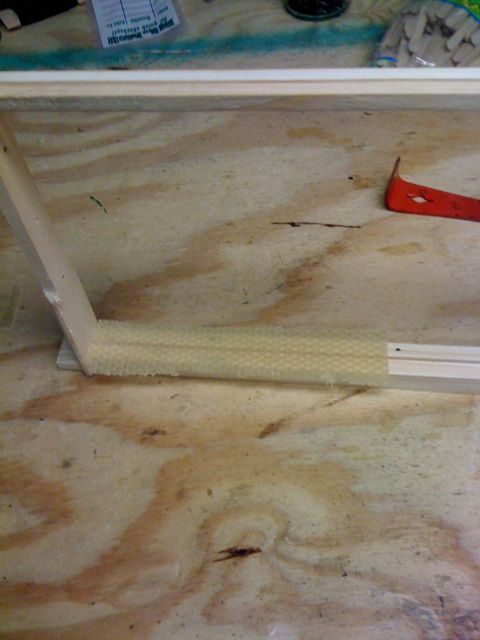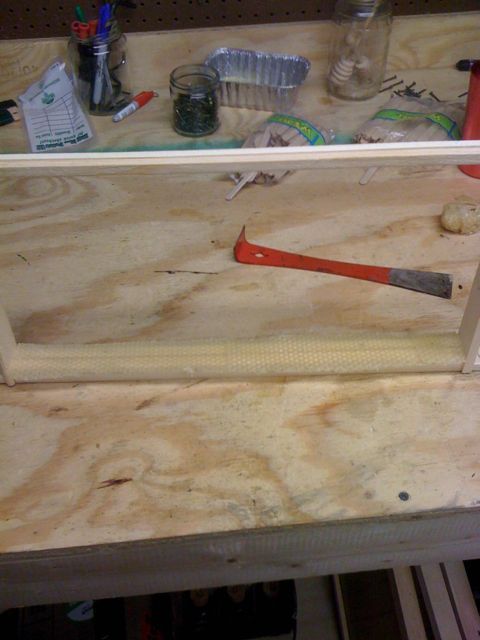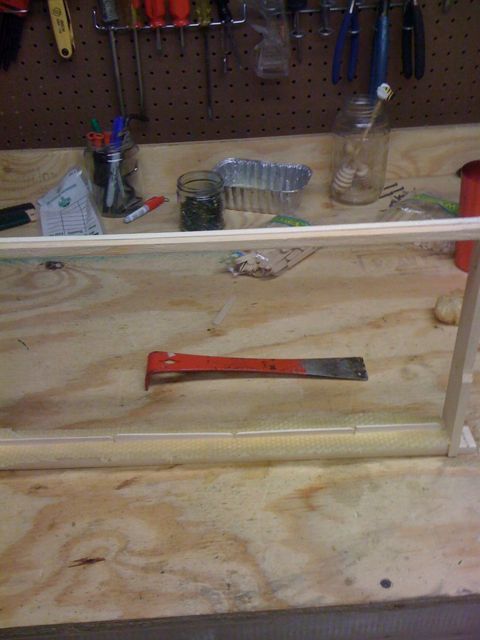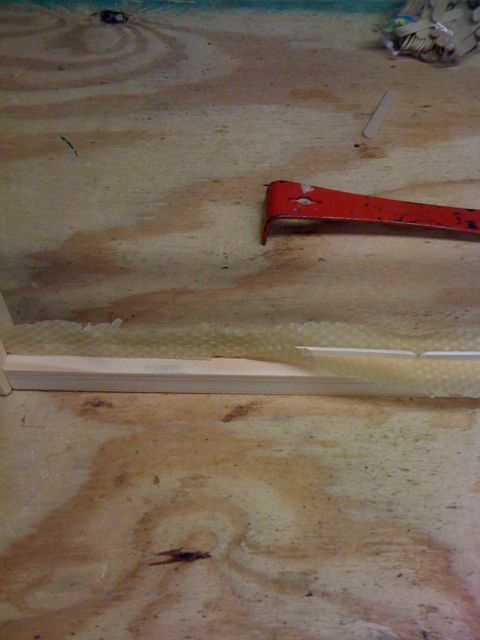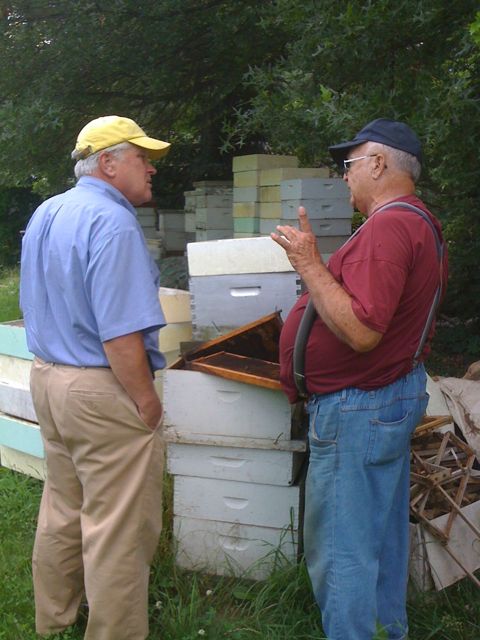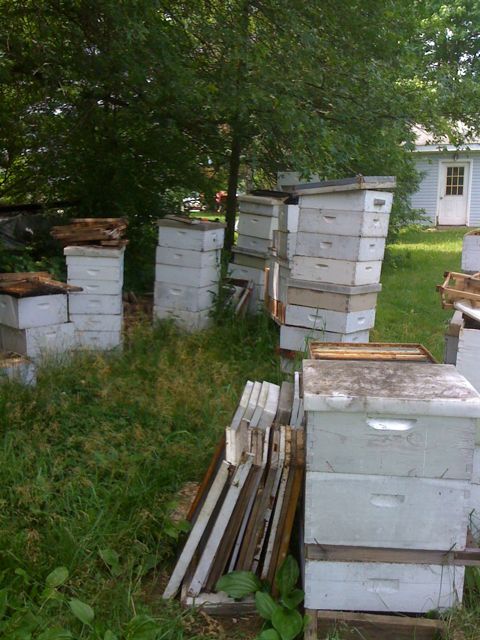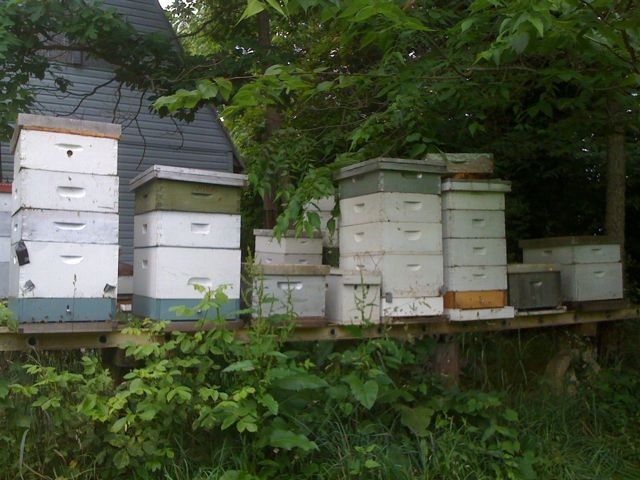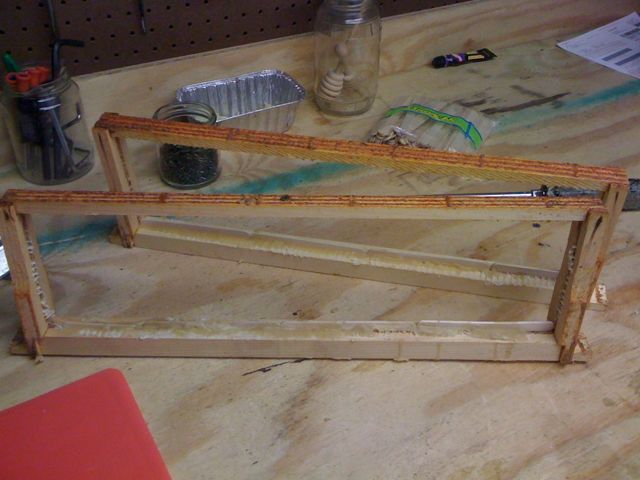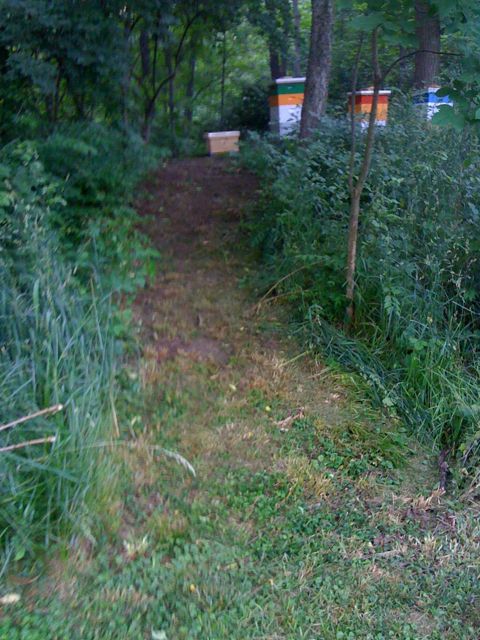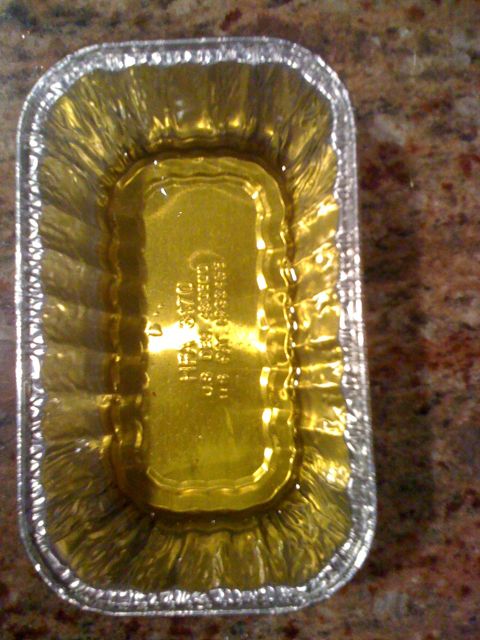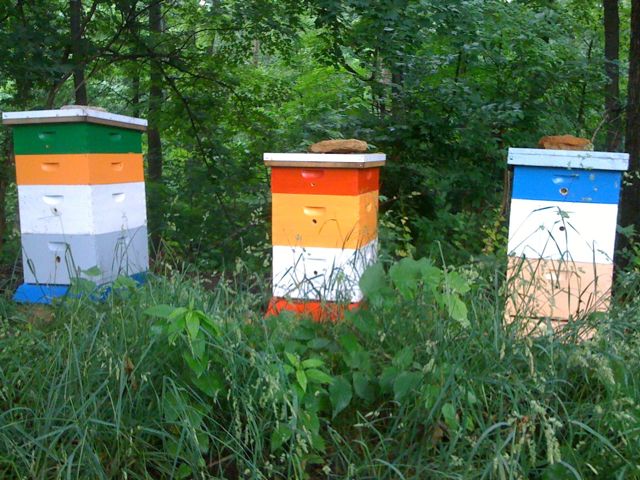I tried to follow some internet directions on how to start foundationless frames, but they seemed sort of messy and complicated. And yesterday I discovered a pretty good and very quick system and completely clean process that I’ll share here.
Here’s an empty deep frame with a split top…there’s a little groove in the top (the frame in the photograph is actually resting on it’s top) into which the wax foundation usually slips, and that’s where we’re going to install a guide of wax that will give the bees some direction. It tells them where to begin and which way to build their comb.
I have some unused beeswax foundation (the kind with the wire running through it). I bought the foundation before I decided that going foundationless made more sense for me and my bees. It works perfectly for this process. I simply break or tear the foundation along the wire…it breaks naturally there. Then, I lay the strip along the groove in the top of the frame.
I cover the length of the frame with the strips of foundation. Then I place my hand on the wax to soften it a bit.
Once the wax is pliable (and this works much better if it’s done in a warm room), I press a series of popsicle sticks through the wax and into the groove.
The popsicle sticks provide a frame around which the wax will wrap.
I wrap the wax up and around the popsicle sticks. The warmth from my hands softens the wax perfectly and makes it pliable. I mold it and shape it as I go.
That’s all there is to it! I now have a nice little start of wax from which the bees will hang their own comb. This process involves zero mess and requires no additional tools (other than the hive tool I use to chop off a little bit of that last popsicle stick so it’ll fit).
This takes me about 3 minutes per frame…no wax melting, no wax painting, no syringes or application tools. Just a little bit of pre-formed foundation, some popsicle sticks, and the warmth from your own hands will do it.
And I guess I’ll use these tiny leftover popsicle sticks in my smoker. Yep. This is as much about recycling and simplifying as it is about anything, right?



